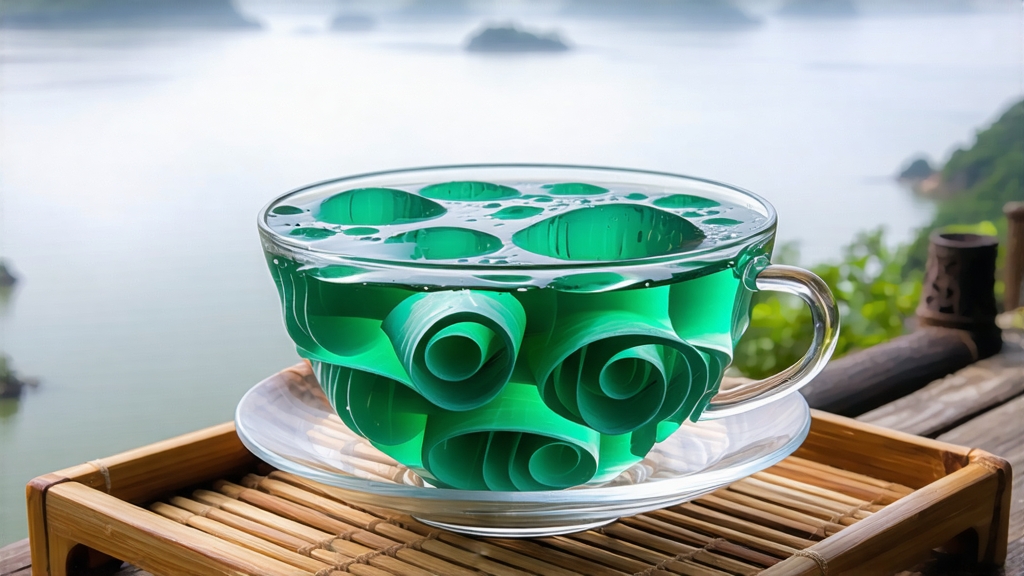
Biluochun, whose name translates literally to “Green Snail Spring,” is one of China’s ten most celebrated teas, yet it remains a quiet mystery outside specialist circles. Grown on the mist-laden hills that cradle Lake Tai in Jiangsu Province, this jade-green jewel is distinguished by tiny, tightly spiraled leaves that resemble miniature snail shells and by a fragrance so intense that, when first exported to Europe in the eighteenth century, customs officers reportedly catalogued it as “Chinese flower tea,” unable to believe that leaves alone could smell like ripe peaches and blooming orchards.
The recorded history of Biluochun begins during the late Ming dynasty, when a traveling monk noticed local tea farmers on Dongting Mountain discarding leaves that exuded an unusually fruity aroma. He carried samples to the imperial court in Nanjing, where the Chongzhen Emperor (r. 1627-1644) declared it “Scary Fragrance” (Xia Sha Ren Xiang) because its perfume was almost unsettlingly powerful. The name endured until the Kangxi Emperor visited Lake Tai in 1699. After tasting the tea at the Dongting Temple, he found the original name inelegant and rechristened it Biluochun, referencing both the snail-like shape and the season when the leaf is at its sweetest.
Although Biluochun is technically a single-origin tea, three micro-categories have emerged as gardens expanded across the East and West Dongting peaks. Original Mountain (Ben Shan) tea comes from the granite-and-quartz core of the islands, where mist rises off the lake every morning, acting like a natural shade cloth that slows photosynthesis and concentrates amino acids. Outer Mountain (Wai Shan) gardens lie on the adjacent mainland hills; leaves here grow slightly larger and produce a softer cup. Finally, the newest designation, Lakeside (Hu Bin), refers to terraced plantations reclaimed from old orange orchards; these teas are brighter, more astringent, and affordable enough for daily drinking while still displaying the cultivar’s trademark fruitiness.
All three styles, however, share the same genetic stock: a tender, early-sprouting clone known locally as “Xiao Ye” or small-leaf. Its buds are so tiny that 70,000 are required to yield a single kilogram of finished tea, explaining why top grades can command over two thousand U.S. dollars per pound. Picking begins when the lake’s winter ice has barely melted, typically between the Qingming festival (early April) and Grain Rain (late April). Only the standard “one bud with one unfolding leaf” is plucked before seven in the morning, when dew still glistens and cell turgor is at its peak.
Crafting Biluochun is a race against enzymatic time. Within minutes of harvest, the leaves are spread in shallow bamboo baskets and cooled in drafty corridors to evaporate surface moisture. They are then pan-fired in cast-iron woks heated to 180 °C, a step Chinese artisans call “killing the green” (sha qing). The tea master tosses the leaves with bare hands, relying on decades of callus to tolerate the heat while judging the exact second when grassy compounds have been neutralized yet floral volatiles remain. Immediately after sha qing, the leaves are rolled into spirals using a unique double-motion technique: the right hand presses a palm-full of leaves against the wok’s wall while the left hand rotates the basket, creating torque that twists the still-pliable cells. Six minutes later the temperature is dropped to 70 °C and the rolling continues for another twenty, until each leaf resembles a tiny jade snail shell. A final gentle bake at 60 °C reduces residual moisture to 4 %, locking in the aroma that will later unfurl in the cup.
Because the leaf is so delicate, water that is even slightly too hot can scald the tips and turn the liquor bitter. The classic Jiangsu method calls for 75–80 °C water and a tall, cylindrical glass, which allows the foreign drinker to watch the “tea dance.” First, warm the glass with a splash of hot water and discard. Add three grams of tea—roughly a level teaspoon—then fill the glass one-third full, tilting it so the leaves swirl like green snowflakes. After thirty seconds, top up with water along the glass wall to avoid direct impact on the floating leaves. Within a minute the spirals will begin to sink, releasing a pale champagne-colored liquor. The first infusion should be sipped at around 60 °C, when peach and